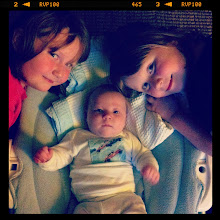The second reading for this week -
Making the Most out of 15 Minutes: Reality TV's Dispensable Celebrity
Sue Collins
Television New Media 2008; 9; 87 originally published online Jan 16, 2008
Reality TV - displacing unionised workers by replacing them with cheaper nonunionised "talent".
Does "celebrity as a cultural commodity" also suffer or are there just different opportunities e.g. the increasing popularity of day in the life style celebrity reality tv shows - Paris Hilton, The Osbornes, Jessica Simpson etc
Reality TV has given rise to a new category of celebrity - what Collins refers to as the "dispensable celebrity" who will enjoy their 15 mins of fame but will rarely be absorbed into the celebrity world long-term. Dispensibility is the defining feature of reality TV.
Gamedoc - a competition based series that portrays "ordinary" people in unique competitive situations e.g. Survivor.
Docusoap - places "ordinary" people in a natural setting and seeks to document their natural behaviour e.g. Real World.
"Celebrity is established by its visibility as a function of its reproducibility, or by its exposure
to audiences, who subjectively participate in the discursive construction and maintenance
of celebrity through their reception." (p.5, 2008).
Celebrity is the result of a "complex interplay among processes of production, mediation, and reception." (p.6, 2008). It is both a cultural and financial commodity.
Celebrities are produced, managed, shaped, promoted and their successful distribution is the key to the producer's profits. There are four stages of cultural production - creation, reproduction, circulation and exhibition. This is a risky and expensive business and producers are increasingly tightening their control on reproduction and circulation as a means of profiting from their commodity.
Collins argues that celebrity value " is best understood as a function of visibility based on potential reproducibility and the subsequent sustaining of an audience base." (p.9, 2008).
Reality TV has constructed its own financial business models e.g. The Survivor business model in which the program is not made with deficit financing but rather uses preproduction sponsorship to offset the costs of producing the show. Wide use of product placement and spin-off merchandise contribute substantially to profits. The producer then hopes that their successful reality TV concept can be sold on to other global markets for adaptation.
The reality TV show can feed off itself by recruiting from within e.g. The second season of The Apprentice "re-employed" talent from the first series to work for the new contestants. Similarly, reality TV success stories will usually go in to make appearances on other TV shows owned by the same network e.g. Bill Rancic of The Apprentice went on to make numerous appearances on other NBC owned shows including The Tonight Show.
Friday, August 14, 2009
Subscribe to:
Post Comments (Atom)

No comments:
Post a Comment